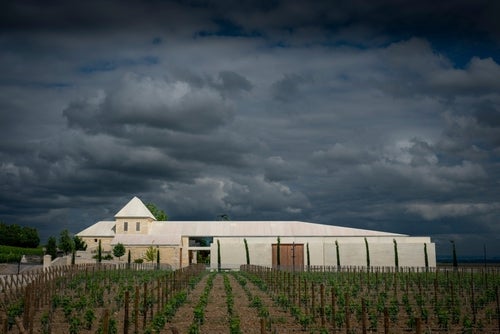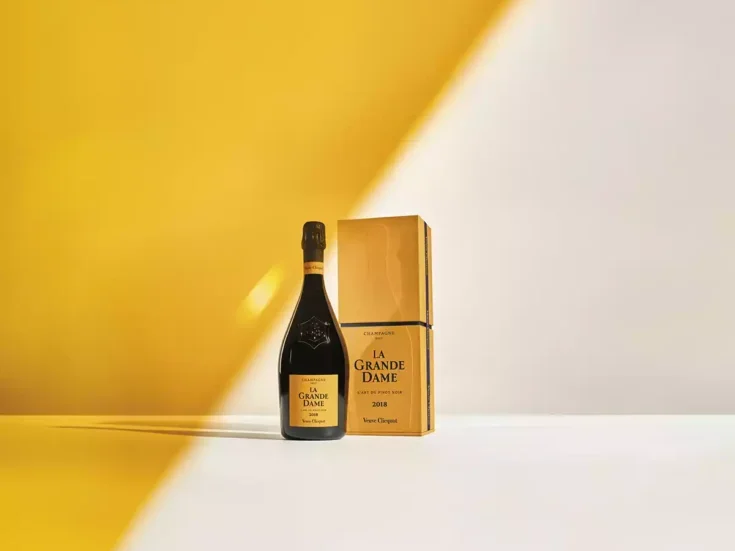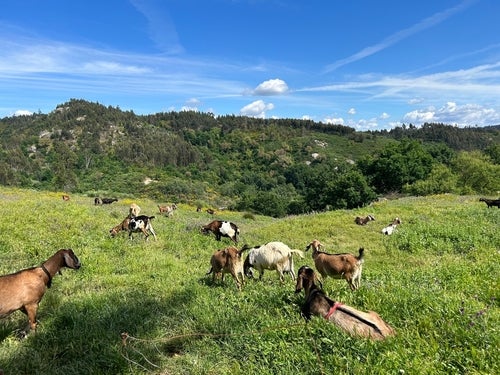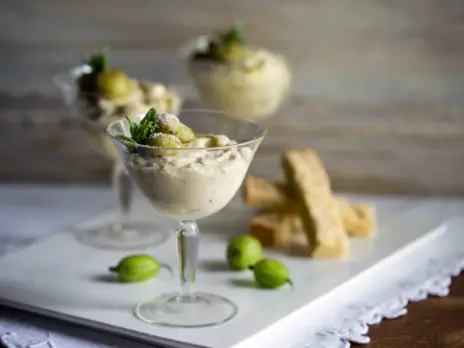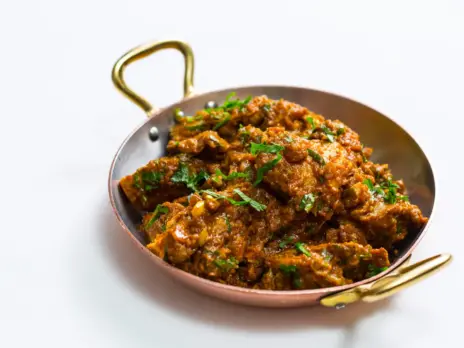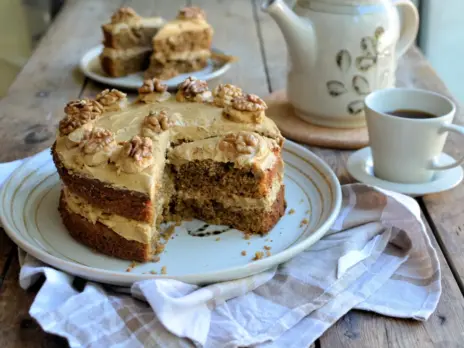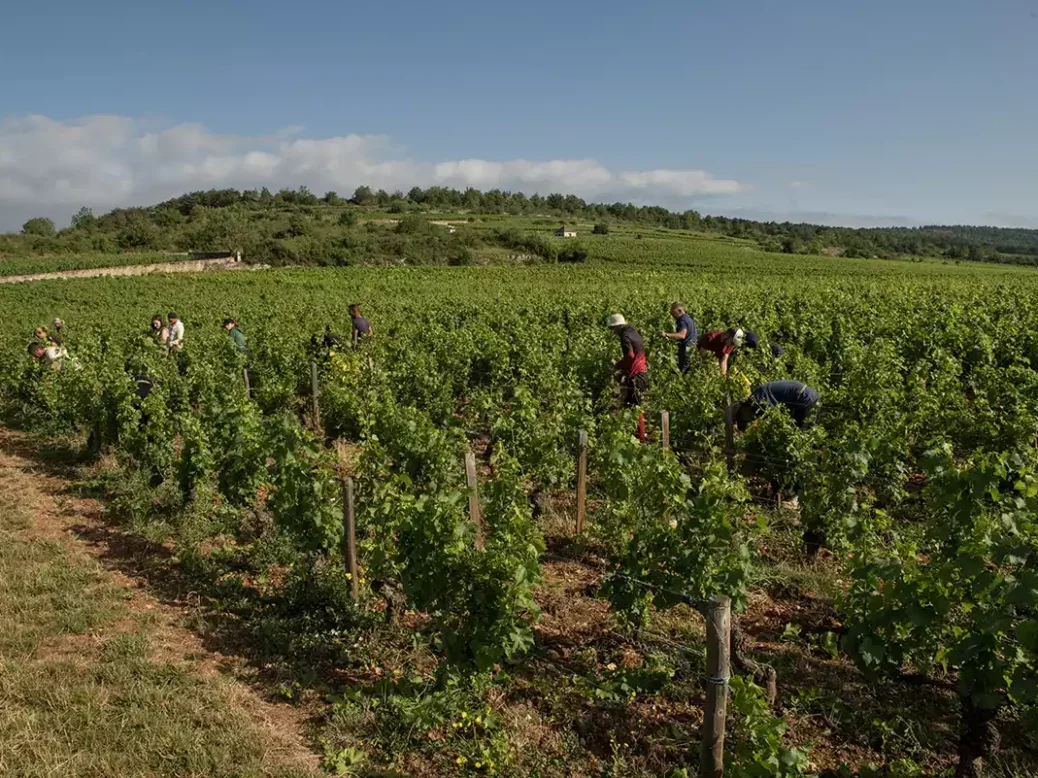
I am fortunate to taste mature vintages of Burgundy grands crus fairly often, but a vertical of Montrachet, the greatest of grand cru whites, is pretty rare and sufficiently intriguing to merit a flying visit to Burgundy for a day to taste 12 vintages of Domaine Jacques Prieur Montrachet and take a walk in its illustrious parcel.
In fact, the 0.5863ha (1.5-acre) parcel is divided into two distinct sections at the top of Montrachet in the Chassagne section. The highest section perches on a narrow terrace supported by a wall in the lieu-dit Dents de Chien which was officially ratified as Montrachet in 1921. Just 20.9 ares (0.5 acre), this is planted north-west, since the shelf is too shallow to be planted east-west, with not enough space for a horse to turn. All Jacques Prieur’s grands crus are worked by horse-drawn plow.
The 45-year-old vines are packed quite tightly, with just 75cm (30 inches) between each plant, rather than the typical 1m (3.3ft), and there is very little topsoil, which is thinner and stonier than in the parcel of 37.73 ares (1 acre) below, where the vines are 65 years old. The difference in altitude, from the lowest vines on the slope, to the top of Dents de Chiens, is about 12m (40ft). Incidentally, not all of Dents de Chien made it into the 1921 re-delimitation of Montrachet. Some is still classified as Chassagne premier cru.
The Labruyère family of Moulin-à-Vent owns an 80% share in Jacques Prieur, and fourth-generation Edouard Labruyère has plans to make two separate cuvées of Montrachet from the 2024 vintage, now that he has the space to do so, for the vertical tasting of Montrachet marked the completion of the extension and renovation of the winery and cellar in Meursault. The last occasion for a flight of Montrachet celebrated Nadine Gublin’s 25 years as winemaker. Nadine has been at the helm since 1990, and she runs a tight ship. As I walked briskly around the spacious and squeaky-clean winery with Nadine, she remarked, “As we say in France, you could eat off the floor.” She has doubled the number of tanks, which allows for smaller, more precise fermentations, dividing parcels and separating older and younger vines.
And there is now a cold room, which has the capacity to hold a whole day’s harvest—much more efficient than the storage container pressed into action as a refrigerator in recent warm vintages. As Martin Prieur, whose family retain a 20% share in the business, reflects: “Twenty years ago, it was important to have a vibrating table; now, with climate change, it’s a cold room.”
Nadine tells me that making white wine is easy by comparison with making red. “You just press it, put it in the barrel, and wait. Waiting is the most important part.” Nevertheless, she has modified her approach during her long tenure, to address pre-mox as well as to combat climate change.
“We’ve had no problems with pre-mox for 13 years,” she remarks. “Two things have been significant. We take more bourbes (lees), then at bottling we control the oxygen and have replaced cork with Diam across all the domaine’s wines since 2013.” (The Montrachet is bottled under Diam Origine 30.) This has enabled her to decrease the sulfur dioxide added at bottling to 25mg/l.
Nadine uses a medium-long press cycle, which increases to 1 bar over the first 60 minutes, rising over the next 90 minutes to 1.6 bar. Two pneumatic presses have been supplemented with a new mechanical Coquard press from Champagne, where the Labruyère family has vineyards in Verzenay (Champagne JM Labruyère), and in the 2024 vintage the wines from each press will be kept separate to assess their impact. She has reduced the SO2 added to the press pan by half in recent years and separates a few liters of juice at the beginning and end of the press, settling it overnight before deciding whether to return it to the cuve or discard it.
Edouard recalls that, “Nadine did a strict débourbage [when she arrived to manage the estate in 2008], so one of my first requests was that she keep more lees.” Since the 2009 vintage, the juice has just been settled overnight, for a cloudier juice with a turbidity of 350–400 NTUs, which is moved by gravity into pièces to ferment and age.The proportion of new oak—from four coopers, now with a lighter toast—was decreased in 2009, from 100%, to 50%. Here the wine remains for two winters without racking. Since 2008, what had been regular weekly bâtonnage has been abandoned. Edouard recalls, “I asked Nadine to be very careful in 2015. This vintage convinced me that stopping bâtonnage was the right thing.” When the wine is moved from barrel to tank in April or May, about 20 months after harvest, all the lees are taken and it is left to settle naturally for a couple of months before bottling during the early summer.
Nadine has a close relationship with Montrachet, having made it for 35 years. So, I asked her what makes it special for her. “Montrachet has the phenolic concentration to be more like a red wine. I saw this first in the 1995 vintage. The berries were very small, and the wine, tasted from a black glass, could easily have been mistaken for a red wine. The richness of the polyphenols is incredible, and very specific to Montrachet.”
Ambassadors for the terroir
Edouard has been on a mission to showcase the specific identity of every wine at the domaine, but none more so than the Montrachet. “In 2009, I said I wanted to make wines ambassadors of their terroirs—not Jacques Prieur wines.” But not everything is on his side. “The main danger of climate change is that the sunny vintages overtake the terroir.”
Nadine is not quite so concerned. “The great terroirs are resilient to climate change.” Resilient, yes; but immune, no. There were clearly wines in our tasting that bear the hallmark of a hot vintage, with varying effects on quality and balance. Of course, vintage variation keeps things interesting, but any assessment of Montrachet must be rigorous, given the great potential of the terroir and the price of the wine.
Our tasting was a rollercoaster of vintages, with both striking highs and plummeting lows. The vertical clearly articulated Montrachet’s propensity for power, muscularity, and longevity. The 2020 and 2015 show the tannic grip more associated with red wine, while 2017 and 2007 demonstrate Montrachet’s capacity for finesse. In the 2014, my favorite wine of the tasting, the power and energy are harnessed to produce a light and luminous expression.
Tasting
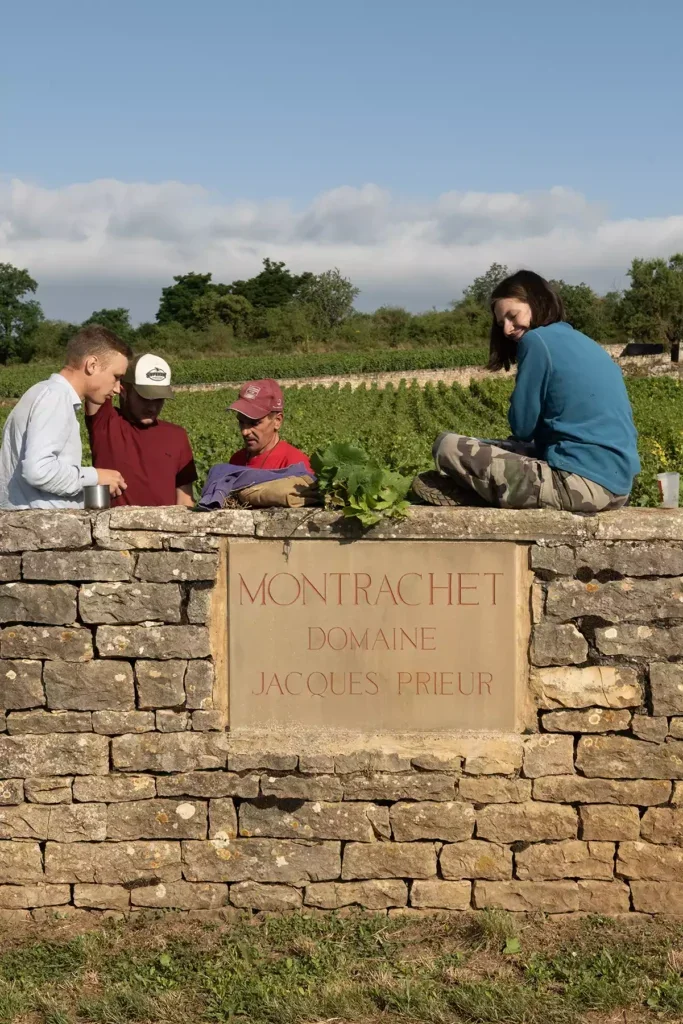
2020 Montrachet Grand Cru
Nadine recalls that 2020 was one of the hottest vintages since 2003. “We picked on August 27. I didn’t expect the juice to be so fresh. Global warming is not an issue. The heat burns the malic but does not affect the tartaric. We never add acidity.” Edouard felt it was too early to comment.
Rich, dense, and full-bodied, this grabs the palate. A firmly structured wine, with muscular minerality and tannin. A bit of bruiser at the moment. Both grippy and glossy, it is robustly textured. Raw and ruthless in its youth, this requires time to settle, allowing the bold elements to integrate. The richness certainly reflects the hot summer, but there is balance. The concentration of fruit is matched by a core of freshness, which is crucial to the success of this wine. It punches through into a powerful and persistent finish. Impressive presence and excellent aging potential. 2030–50. | 98
2018 Montrachet Grand Cru
Edouard observed, “As an owner, I am very happy when we have quantity, but in 2018 we maybe had too much. Even so, it is not ready yet. The DNA of Montrachet needs more time to be expressive.”
Reserved and austere, there is a sparsity to this 2018. There’s plenty to like about it—the restraint, the sense of unfurling tension, the savory salinity, the tight core, and the focus—but does it have sufficient density and balance to make old bones? For Montrachet, it’s a tad lean, without the layering and depth of the surrounding vintages. The umami character is on the dry, salty side, which makes me wonder how it will age. I like the sapid finish, but its power and persistence are rather modest for Montrachet. 2026–35. | 95
2017 Montrachet Grand Cru
Edouard said, “I love the 2017. It is the little brother of the 2014. The same DNA. A wine that pulls away on the palate. We have great ripeness, but with no heaviness, and it has a backbone of acidity.”
A bright, lively, pure, and singing aroma, with lovely intensity and youthful citrus notes. A grand fountain onto the palate. Gorgeous depth of fruit, with an enticing juxtaposition of sweetness and saltiness. There is a lively line of freshness. The palate is intense but refined, showing power with charm. The phenolics are subtle and almost silky. Sorbet-smooth, it glides into a finish that is fabulously long, if not quite as long as that of the 2020. I do like this shimmering wine, which shows Montrachet’s capacity for finesse. Pick your moment to drink it. Totally enjoyable for its fruity youthfulness, but this should age for 20 years with ease… and if you like mature wine, why not 30? | 96+
2015 Montrachet Grand Cru
“A nightmare year because of the sun, and maybe this solar vintage has overtaken the terroir,” pondered Edouard.” Nadine added, “With the concentration, there was much less juice, which increased the phenolic aspect.”
You could indeed mistake this for a red wine. There is almost a red-fruit aroma, with a hint of truffle and mulched woodland undergrowth, which nods toward evolution. It strikes the palate with punchy concentration, sturdy and dense, but today the alcohol is rather overt and biting. Sadly, the burn cuts the finish. There’s no lack of phenolic grip, but at the moment it feels a bit coarse. Not a good a good time for this wine, which wants to be left alone. Wait at least year or two. 2027–40. I am optimistic that this score will improve, but for now | 93
2014 Montrachet Grand Cru
Edouard enthused, “A magic vintage. Exactly what I want—it’s like an arrow.”
Clear-cut, crystalline wine. It breezes across the palate, beautifully delicate and yet gloriously intense. In 2014, Montrachet is balletic—a strong dancer with lithe muscle. Lean and light in a very good way. It has beautifully defined edges and a steel-wire core of freshness. The scope, depth, and complexity are effortless. The finish is persistent, precise, and lucid, with marine-like minerality. It’s an enchanting expression of the terroir. Montrachet with luminosity. Drinking from now until at least 2045—and probably beyond, because it is so beautifully balanced. | 99
2013 Montrachet Grand Cru
Eduard expressed mixed feelings about this wine: “I expected more power and a more shining aspect, considering the quality of the fruit… But it’s difficult coming after the 2014.”
Buttery brioche and roasted chestnut combine with herbaceous notes as the aroma moves toward a more tertiary phase. This butter-mint character carries to the palate, as if the wine can’t shake off the memory of a miserable summer. It feels rather lactic and lean, lacking power and intensity. I cannot see this evolving beneficially. | 90
2012 Montrachet Grand Cru
It was a difficult season from the spring onward, with storms, hail, hot spells, and the pressure of mildew, oidium, and rot. Edouard commented, “It’s a pretty decent wine, considering the difficulties.” He recalled that Nadine was more confident than he was regarding its potential for evolution, because of the acidity. And quality was not his only concern. “It was a nightmare as an owner. We ended up with only 15hl/ha.”
Rather awkward and uneven. I don’t warm to this wine, which has richness and gloss, yet is flat and tart. The nose, which is quite evolved, has spicy orangey notes reflected in the candied orange peel, and some pith on the palate. There’s concentration and grip, but somehow, they are at odds. The finish shows the bitterness and bite of coffee grounds. It’s not going to fall apart, but I am just not sure how beneficial aging will be. 91-92
2009 Montrachet Grand Cru
Edouard admitted, “I was afraid of heaviness,” adding, “But I am happy it is not heavy.”
A rich, nutty, and somewhat oxidative aroma. It is sumptuous, with great textural richness. Full-bodied and rounded, showing grand cru breadth on the palate, if not quite the depth. A welcome, smooth, tannic note offsets the ripeness and makes up for the softer acidity, so the wine is still well-balanced. The finish is more appealing and persistent than that of the 2102 or 2013, but the palate is also quite evolved. Don’t keep this too long. Eight to ten years max. | 93
2007 Montrachet Grand Cru
Nadine commented that the summer was terrible: storms, hail, and tropical heat. She picked the Pinot Noir quickly, but with Chardonnay she took her time. She harvested Montrachet even later than Domaine de la Romanée-Conti. She mentioned the tannin and said the wine was crisp and salty, with the acidity enveloped in ripe fruit. Edouard remarked, “If the 2017 evolves the same way, I will not be surprised,” adding, “2007 is a good ambassador of the terroir. When I took over, this is the wine I wanted to make.”
The aroma is surprisingly fruity, with fresh-citrus sparkle combining with warmer notes of hay, ground ginger, and buttery toast. This was a difficult season, requiring careful attention in the vineyards, but the profile bears comparison with 2017, although the winemaking was more interventional in 2007—cleaner juice, new oak, and bâtonnage, but the wine rises above it. Upright and energetic, there’s verticality combined with decent intensity and depth. It’s silky smooth and super-fresh, with a vibrancy that pirouettes the wine onto the smooth and shiny mineral finish. Plenty of drive here. This wine will continue to evolve. | 95-96
2006 Montrachet Grand Cru
Edouard said, “I was afraid that because of the climate, the wine could be heavy and tired, but it is not.” Nadine is most surprised by how well the final three wines are showing and remarks, “From 2006, we taste the terroir of Montrachet.”
This swaggers onto the palate, a burly wine with burnished muscle. It has a rich, phenolic texture. Full and sumptuous, it shows the generosity of this fruity vintage, together with the winemaking approach of the time. It’s quite impressive in a showy manner, with its full-throttle finish. A chunky and fully mature wine. There is no reason to keep it longer. | 94-95
2003 Montrachet Grand Cru
Edouard didn’t want to show the 2003, but conceded, “I have to erase what is in my mind. Some reds are tired. We feel the heat. This is not as vibrant as the 2006 or 1999, but it is still alive. It is the good surprise of the day.”
Suede-soft and seductive, the ample palate has toffee richness. The balance is made with miso-salty sapidity. It is fully mature now but still has power and is not tired. It inspires confidence for other wines of hot summers. Like many of the best 2003s, which seem indestructible, it seems to have plateaued and has the concentration and structure to coast along. | 93
1999 Montrachet Grand Cru
After the attractive burned caramel aroma, the juicy attack comes as a surprise. The palate feels so vital, fresh, and springy. It is streamlined and has lithe muscularity. The phenolic backbone is there but enveloped in silky textured fruit.
The powerful finish is both distinguished and sensual. For Edouard, the 1999 is his dessert island wine. “The perfect guy. The mentor.” Yes, it is near-perfect but doesn’t quite engender in me the emotional response that would take it to a perfect score. Delicious now, but no hurry. This still has plenty of gas in the tank. | 98

